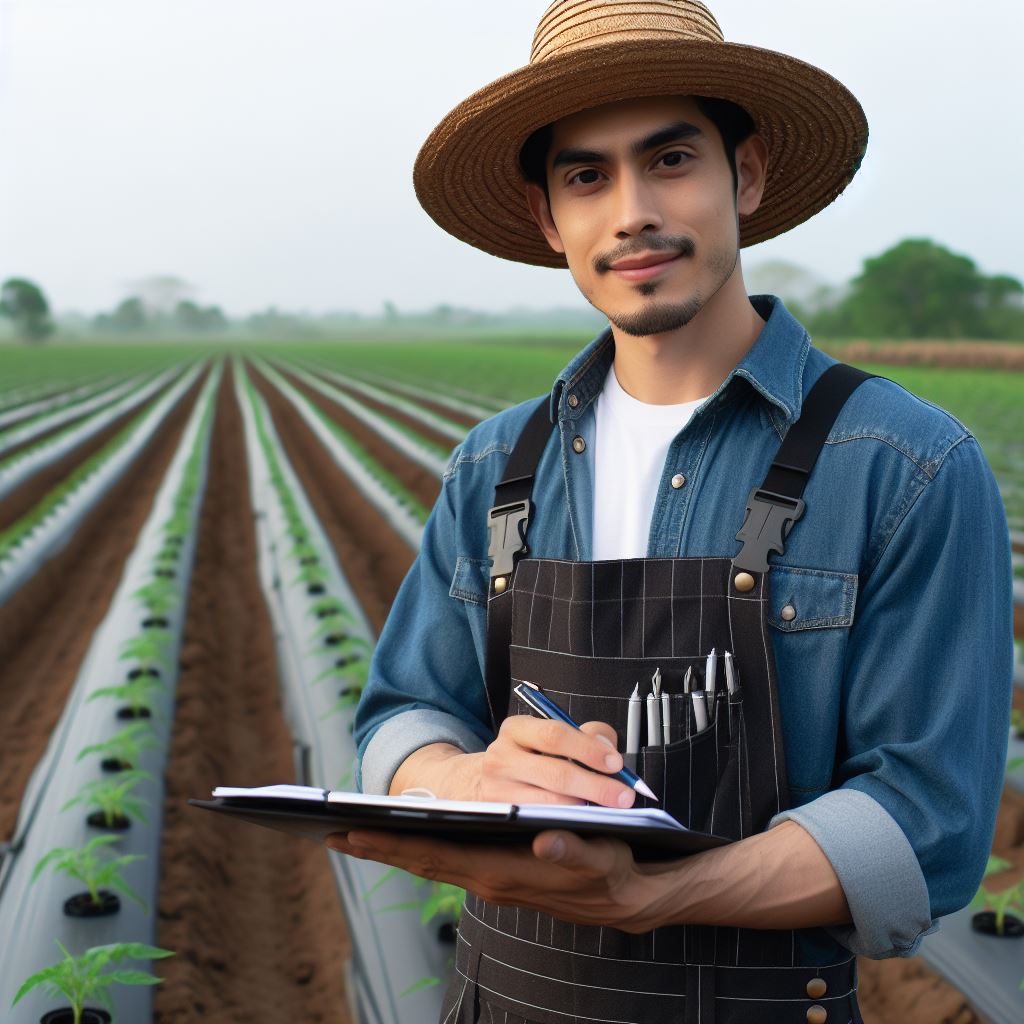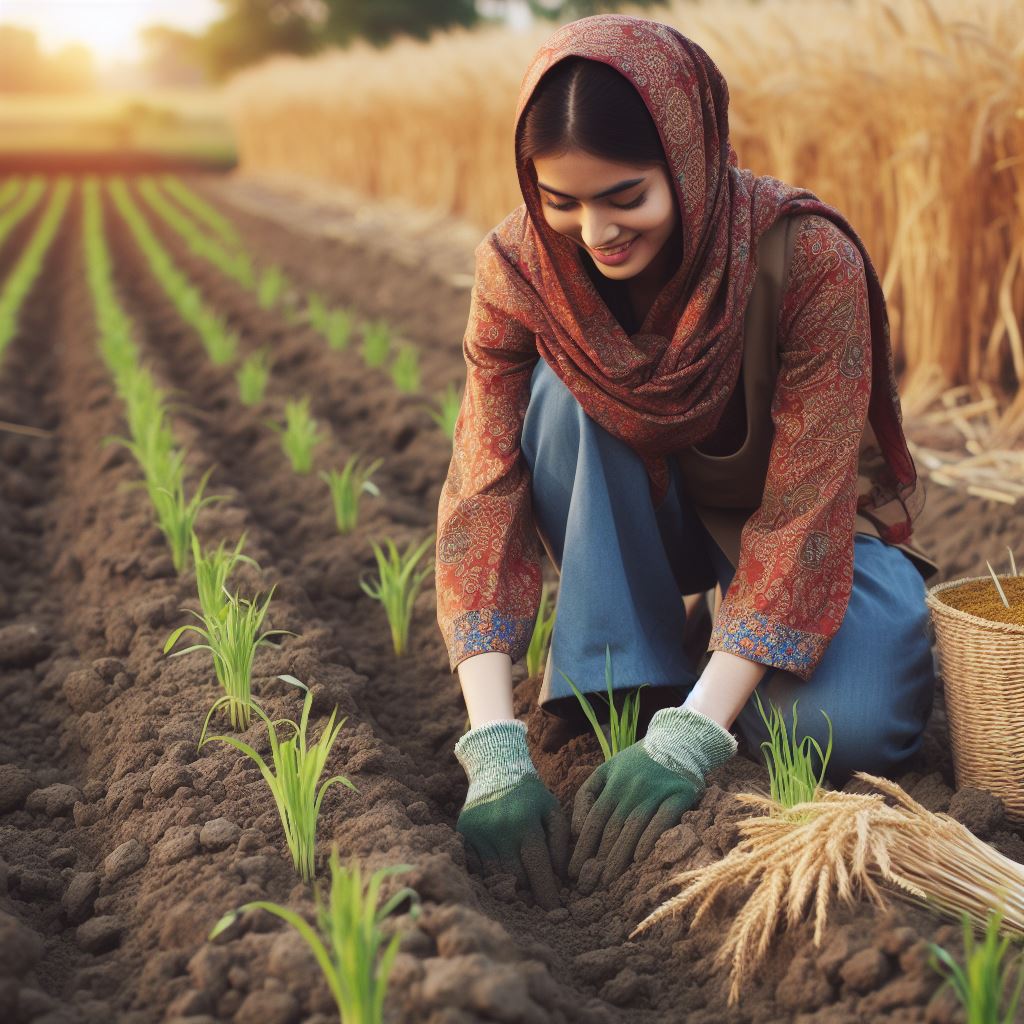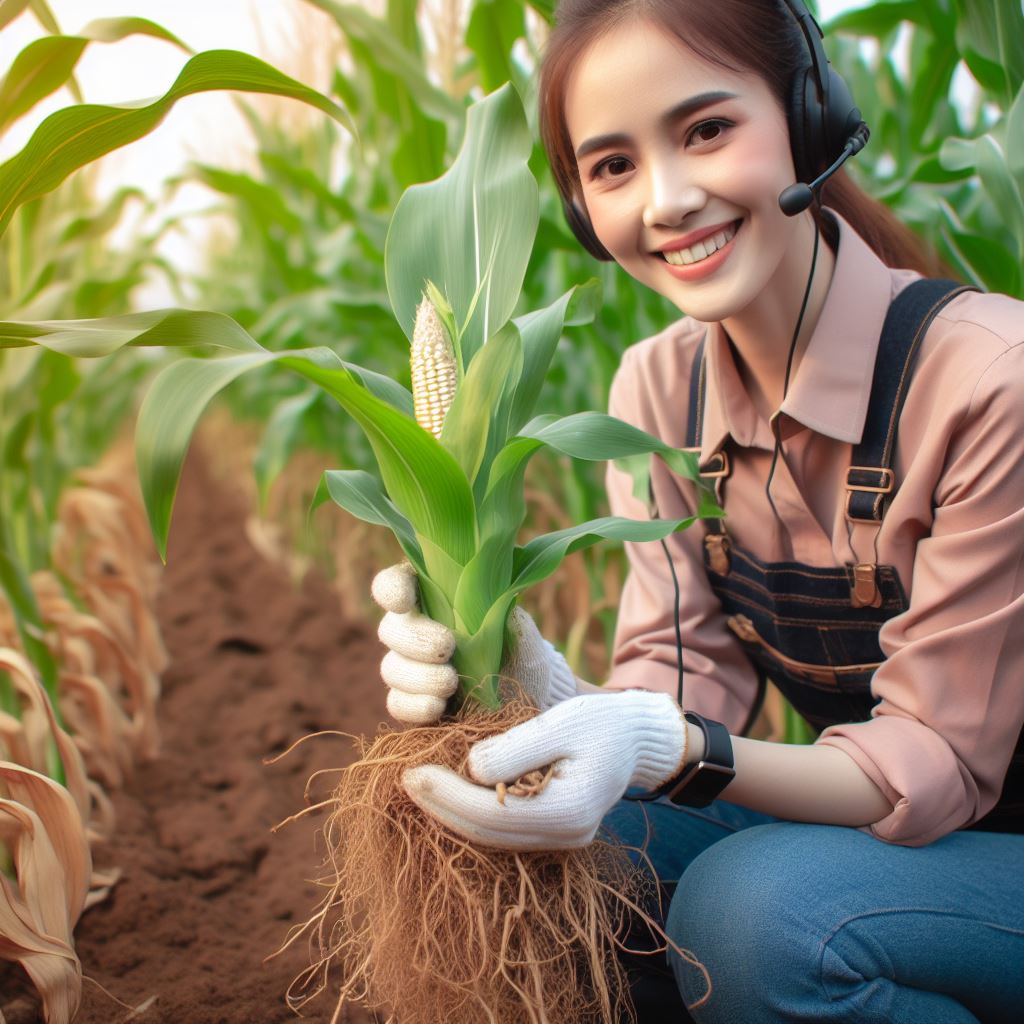Introduction
Choosing the right planting method is crucial for successful gardening and optimum plant growth.
It directly influences how well your plants will develop, their productivity, and overall health.
In this blog post , we will explore and compare various planting methods to help you make informed decisions and achieve the best results for your garden.
A. Importance of Choosing the Right Planting Method
Selecting the appropriate planting method is essential as it can significantly impact the success of your gardening endeavours.
It determines how effectively nutrients, water, and sunlight are delivered to the plants.
Furthermore, it affects the root development, establishment, and overall growth of your plants.
B. Overview of Different Planting Methods to be Compared
In this blog section , we will discuss and compare several popular planting methods.
These methods include traditional row planting, raised bed gardening, container gardening, square foot gardening, and companion planting.
Each technique has its unique advantages and considerations, which we will delve into, allowing you to make an informed decision based on your gardening goals and resources.
Row planting is the conventional method that involves planting crops in rows, allowing easy maintenance and access.
Raised bed gardening enhances soil drainage and aeration while reducing weed competition.
Container gardening enables gardening in limited spaces, making it suitable for urban or small-scale gardeners.
Square foot gardening maximizes space utilization with a carefully planned and organized approach.
Lastly, companion planting involves planting specific plant combinations to enhance growth and productivity.
By comparing these different planting methods and understanding their benefits and limitations, you will be able to choose the most suitable approach for your garden, considering factors such as space availability, soil conditions, and personal preferences.
Transform Your Agribusiness
Unlock your farm's potential with expert advice tailored to your needs. Get actionable steps that drive real results.
Get StartedIn the upcoming sections, we will dive deeper into each planting method, exploring their techniques, benefits, and considerations, empowering you to make informed decisions for your gardening success. Stay tuned!
Traditional Row Planting: A Time-Tested Method for Crop Production
Traditional row planting is a widely used method for growing crops in a systematic and organized manner.
It involves creating straight rows of plants with evenly spaced distances between them.
This blog section will explain the process, discuss its advantages and disadvantages, and provide examples of crops that are suitable for traditional row planting.
A. Explanation of the Traditional Row Planting Method
Traditional row planting begins with preparing the soil by tilling and removing any weeds or debris.
The next step is to divide the area into straight rows, typically using a garden hoe or a string to ensure accuracy.
The distance between each row can vary depending on the crop and the available space.
Once the rows are marked, seeds or transplants are placed at regular intervals along the rows.
Proper spacing is crucial as it allows the plants to receive adequate sunlight, air circulation, and nutrients.
It also prevents overcrowding and reduces the risk of disease and pest infestations.
B. Pros of Traditional Row Planting
One of the main advantages of traditional row planting is its simplicity and ease of implementation.
Even novice gardeners can quickly grasp the concept and start growing their crops using this method.
Moreover, it allows for better weed control, as the rows create defined paths in between the plants, making it easier to manually remove weeds.
Another benefit is the efficient use of space. Traditional row planting maximizes the area available, ensuring each plant has sufficient room to grow and flourish.
Additionally, this method facilitates crop rotation and facilitates the use of various gardening tools, such as sprinklers or drip irrigation systems, for efficient water distribution.
C. Cons of Traditional Row Planting
While traditional row planting has its advantages, it also has a few drawbacks. One major disadvantage is the increased risk of soil erosion.
The exposed soil between rows is susceptible to erosion caused by wind or heavy rainfall.
Implementing conservation techniques like mulching or planting cover crops can help mitigate this issue.
Another limitation is that traditional row planting may not be suitable for all types of crops.
Some plants, like vine varieties or sprawling vegetables, require more space to spread.
In such cases, alternative planting methods like raised beds or intensive planting might be more appropriate.
D. Examples of Suitable Crops for Traditional Row Planting
Numerous crops thrive in traditional row planting environments.
Some common examples include corn, beans, lettuce, carrots, radishes, and tomatoes.
These plants typically benefit from the organized rows, making it easier to tend to, harvest, and maintain them.
Showcase Your Farming Business
Publish your professional farming services profile on our blog for a one-time fee of $200 and reach a dedicated audience of farmers and agribusiness owners.
Publish Your ProfileIn essence, traditional row planting is a tried-and-true method that offers simplicity, efficient space utilization, and better weed control. It is suitable for a wide variety of crops, ensuring optimal growth and productivity.
However, it is important to consider the limitations and adapt the planting method accordingly for specific plants or environmental conditions.
By understanding the pros and cons of traditional row planting, gardeners can make informed decisions about the most appropriate method for their needs.
Square Foot Gardening
A. Explanation of the square foot gardening method
Square Foot Gardening is a method that divides a garden into smaller, manageable sections.
Each section is typically one square foot, making it easier to plan and care for.
It is a space-efficient gardening method designed by Mel Bartholomew. It involves dividing a planting area into 1-foot by 1-foot squares, creating a grid.
Each square is then planted with a specific crop, optimizing space and minimizing waste.
The method emphasizes raised beds filled with a nutrient-rich soil mix to enhance productivity.
By carefully planning and arranging crops in designated squares, gardeners can maximize yields, minimize weeds, and efficiently manage resources.
This approach is particularly popular for small spaces, making gardening accessible to urban dwellers or those with limited areas for cultivation.
B.
Pros and cons of square foot gardening
Square foot gardening is a popular gardening method with several advantages.
Its pros include efficient space utilization, maximizing yields in small areas, reduced water and resource usage, and simplified maintenance. Additionally, it’s beginner-friendly and minimizes weed growth.
However, challenges include initial setup costs for building raised beds, potential soil compaction over time, and limited space for larger plants.
Some critics argue that the rigid grid system may restrict natural plant growth patterns.
Despite these cons, many gardeners appreciate square foot gardening for its accessibility, organization, and ability to create diverse, compact, and productive vegetable gardens.
The pros of this method include maximizing space, reducing weed growth, and conserving water. On the downside, it can be costly to set up and may not be suitable for all types of plants.
C. Examples of crops suitable for square foot gardening
Square foot gardening involves dividing a garden into small square-foot sections for efficient use of space.
Ideal for this method are compact crops that thrive in close quarters.
Examples include leafy greens like spinach, lettuce, and kale, root vegetables such as carrots and radishes, compact herbs like basil and cilantro, and dwarf varieties of tomatoes and peppers.
Additionally, bush beans, strawberries, and onions are well-suited for square foot gardening.
This approach maximizes yield in limited space, making it a popular choice for urban and small-scale gardens.
Many crops are suitable for square foot gardening, including lettuce, herbs, carrots, and radishes.
Intensive Gardening
Intensive gardening is a method that maximizes space, time, and resources to produce high yields.
This method involves planting closely together in raised beds or containers, allowing for efficient use of land.
Pros of intensive gardening include higher crop yields, efficient use of water and fertilizers, and less weeding.
Cons of intensive gardening include the need for regular watering and fertilizing, and susceptibility to pests and diseases.
Examples of crops suitable for intensive gardening
Examples of crops suitable for intensive gardening include lettuce, carrots, radishes, spinach, and herbs.
Intensive gardening is a popular method among urban gardeners and those with limited space.
By planting crops close together, one can maximize the use of available space, making it ideal for small yards or balconies.
One key advantage of intensive gardening is its ability to reduce water consumption.
By planting crops closely together, the soil retains moisture better, reducing the need for frequent watering.
Furthermore, the planting method allows for efficient use of fertilizers, as they can be concentrated on the small growing area.
However, there are some downsides to intensive gardening that should be considered.
Regular watering is necessary to ensure the plants receive enough moisture, especially during hot and dry periods.
Also, pests and diseases can spread easily among closely planted crops, requiring regular inspections and treatments.
Despite these challenges, there are several crops that thrive in intensive gardening systems.
Lettuce, for example, grows well in small spaces and can be planted in succession for a continuous harvest.
Carrots and radishes also benefit from close planting, as the compact soil prevents misshapen roots.
Spinach is another suitable crop, as it can be grown year-round in raised beds or containers.
Additionally, herbs such as basil, parsley, and cilantro can be easily grown in small, densely planted areas.
Showcase Your Farming Business
Publish your professional farming services profile on our blog for a one-time fee of $200 and reach a dedicated audience of farmers and agribusiness owners.
Publish Your ProfileIn fact, intensive gardening is a method that maximizes space and resources to produce high yields.
It involves planting crops closely together in raised beds or containers, resulting in efficient water and fertilizer use.
While it requires regular watering and pest control, intensive gardening is a great option for urban gardeners.
By adopting intensive gardening, individuals can cultivate a thriving garden even in limited spaces.
Read: Futuristic Farm Tools: Tomorrow’s Agriculture

Raised Bed Gardening
A. Explanation of the raised bed gardening method
Raised bed gardening involves creating a planting area that is elevated above the ground level.
The raised beds are typically constructed using wood, rocks, or other materials and filled with soil.
This method allows for better control over soil quality, drainage, and weed prevention.
B. Pros and cons of raised bed gardening
Pros:
- Improved soil quality: Raised beds allow for the use of high-quality soil, which promotes healthier plant growth.
- Better drainage: The raised beds provide excellent drainage, preventing waterlogging and root rot.
- Weed prevention: By elevating the planting area, raised beds make it harder for weeds to invade the garden.
- Manageable soil compaction: Raised beds reduce the risk of soil compacting, leading to healthier root development.
- Accessibility: Raised beds can be built at a height that is comfortable for gardeners, reducing strain on the back and knees.
Cons:
- Cost: Building raised beds can be more expensive than traditional gardening methods.
- Limited space: Raised beds take up a defined area and might not be suitable for large-scale gardening.
- Watering requirement: Raised beds tend to dry out faster, requiring more frequent watering, especially in hot climates.
- Maintenance: Raised beds need regular maintenance, including soil amendment, pruning, and pest control.
C. Examples of crops suitable for raised bed gardening
- Salad greens: Lettuce, spinach, and microgreens thrive in raised beds due to the controlled soil conditions.
- Root vegetables: Carrots, radishes, and beets benefit from the loose, well-draining soil in raised beds.
- Tomatoes: The improved drainage and warmer soil in raised beds provide an ideal environment for tomato plants.
- Herbs: Basil, thyme, and rosemary do well in raised beds and can easily be harvested for culinary purposes.
- Strawberries: Raised beds help prevent moisture-related diseases and improve strawberry yield.
- Peppers: Bell peppers and hot peppers grow exceptionally well in the warm soil of raised beds.
- Bush beans: These legumes prefer the loose soil structure provided by raised beds for optimal root development.
In all, raised bed gardening offers several advantages, such as improved soil quality, better drainage, and weed prevention.
However, it also has its drawbacks, including higher costs and increased maintenance.
With careful planning and selection of suitable crops, raised bed gardening can be a successful and rewarding method for growing a variety of plants.
Read: High-Tech Soil Analysis for Farmers
Uncover the Details: Managing Pests in Organic Farming
Container Gardening
A. Explanation of the Container Gardening Method
- Container gardening involves planting in pots, buckets, or any confined space, offering flexibility in urban environments.
- Choose containers with adequate drainage to prevent waterlogging and ensure proper aeration for healthy plant roots.
- Use high-quality potting mix enriched with nutrients for optimal plant growth and development.
- Select a variety of container sizes based on the plants’ mature size, ensuring adequate space for root expansion.
- This method allows gardening on balconies, patios, or even windowsills, making it ideal for limited spaces.
B. Pros and Cons of Container Gardening
Pros:
- Space Efficiency: Perfect for small living spaces or urban environments with limited land.
- Mobility: Easily move containers to optimize sunlight exposure or protect plants from extreme weather.
- Weed Control: Containers minimize weed growth, reducing the need for constant maintenance.
- Pest Management: Easier to monitor and control pests, preventing potential infestations in the garden.
Cons:
- Watering Challenges: Containers may require more frequent watering due to faster soil drying.
- Root Restriction: Limited space may hinder the development of larger plants with extensive root systems.
- Temperature Fluctuations: Containers can experience temperature extremes, affecting plant health in extreme weather conditions.
C. Examples of Crops Suitable for Container Gardening
- Herbs: Basil, mint, and chives thrive in smaller containers, providing fresh flavors for culinary enthusiasts.
- Vegetables: Tomatoes, peppers, and lettuce adapt well to container gardening, offering homegrown produce.
- Flowers: Petunias, marigolds, and pansies add vibrant colors to your container garden, enhancing aesthetic appeal.
- Berries: Strawberries and blueberries flourish in containers, offering a sweet harvest within limited spaces.
To summarize, container gardening emerges as a versatile and accessible method, enabling green thumbs to flourish even in confined living spaces.
Read: Seasonal Soil Care for Maximum Yield
Comparison of Planting Methods
Planting methods play a crucial role in the success of any gardening or farming endeavor.
There are various techniques available, each with its own set of pros and cons.
Understanding these differences and considering key factors can help you choose the most suitable planting method for your specific needs and circumstances.
A. Comparison of the Pros and Cons of Each Planting Method
1. Direct Seeding
- Pros: Saves time and effort, allows plants to establish their roots naturally, and requires minimal maintenance.
- Cons: Susceptible to external factors such as inclement weather and pests, and may result in lower germination rates.
2. Transplanting
- Pros: Provides an opportunity for earlier harvest, better control over planting conditions, and increased chances of successful establishment.
- Cons: Requires more time and effort, higher cost for purchasing or growing transplants, and potential transplant shock.
3. Container Gardening
- Pros: Ideal for limited space, easier access to plants, better pest control, and ability to optimize soil conditions.
- Cons: Limited root space for plants, increased watering and fertilization needs, and susceptibility to overheating.
4. Raised Bed Planting
- Pros: Improved drainage and aeration, better control over soil quality, reduced weed competition, and easier maintenance.
- Cons: Requires initial setup and construction, higher water requirements, and potential for soil erosion.
5. Hydroponics
- Pros: Conserves water, faster growth rates, eliminates the need for soil, and minimizes pest problems.
- Cons: Requires specialized equipment and knowledge, higher upfront costs, and dependency on nutrient solutions.
B. Factors to Consider When Choosing a Planting Method
Before deciding on a planting method, several factors should be taken into account:
- Space availability: Consider the size of your garden or farming area and choose a method that suits the available space.
- Time and effort: Assess the amount of time and effort you can dedicate to planting and maintenance.
- Climate and environmental conditions: Take into consideration the local climate, soil type, and available resources.
- Plant requirements: Understand the specific needs of the plants you wish to grow, including sunlight, water, and nutrient requirements.
- Desired yield: Determine your goals and expectations for yield, considering both quantity and quality.
C. Overall Summary of the Best Planting Methods for Different Situations
The best planting method depends on your goals, resources, and circumstances.
Here are some recommendations:
- Traditional farming: Direct seeding or transplanting are the most widely-used methods for large-scale farming.
- Urban gardening: Container gardening and raised bed planting are ideal for limited spaces and urban environments.
- Quick harvest: Transplanting offers the advantage of an earlier harvest.
- Sustainable gardening: Hydroponics provides a water-efficient and environmentally-friendly option.
Remember, the best planting method varies depending on your needs and priorities.
Experimentation and adaptation may be necessary to find the most effective approach for your specific situation.
Read: Eco-Friendly Pest Control in Farming
Discover More: Irrigation Tech: Smart Water Management
Discover More: Natural Pest Control in Farming
Conclusion
After comparing different planting methods, it is clear that each method has its advantages and disadvantages.
It is important for gardeners to explore and experiment with various techniques to find what works best for their specific needs.
A. Final Thoughts on the Top Planting Methods Compared
When deciding on a planting method, it is crucial to consider factors such as soil type, climate, and available resources.
No single method is superior to all others, as each has its own unique benefits and challenges.
B. Encouragement to Explore and Experiment with Different Methods
Gardeners should never be afraid to try new techniques and step out of their comfort zone.
By experimenting with different planting methods, they can discover innovative ways to optimize plant growth and increase yields.
C. Closing Remarks and Personal Opinion on the Topic
In my personal opinion, the key to successful planting lies in flexibility and adaptation.
By combining knowledge, experience, and a willingness to try new methods, gardeners can achieve remarkable results and nurture flourishing gardens.
Remember, the journey of gardening is as important as the destination.
Happy planting!




